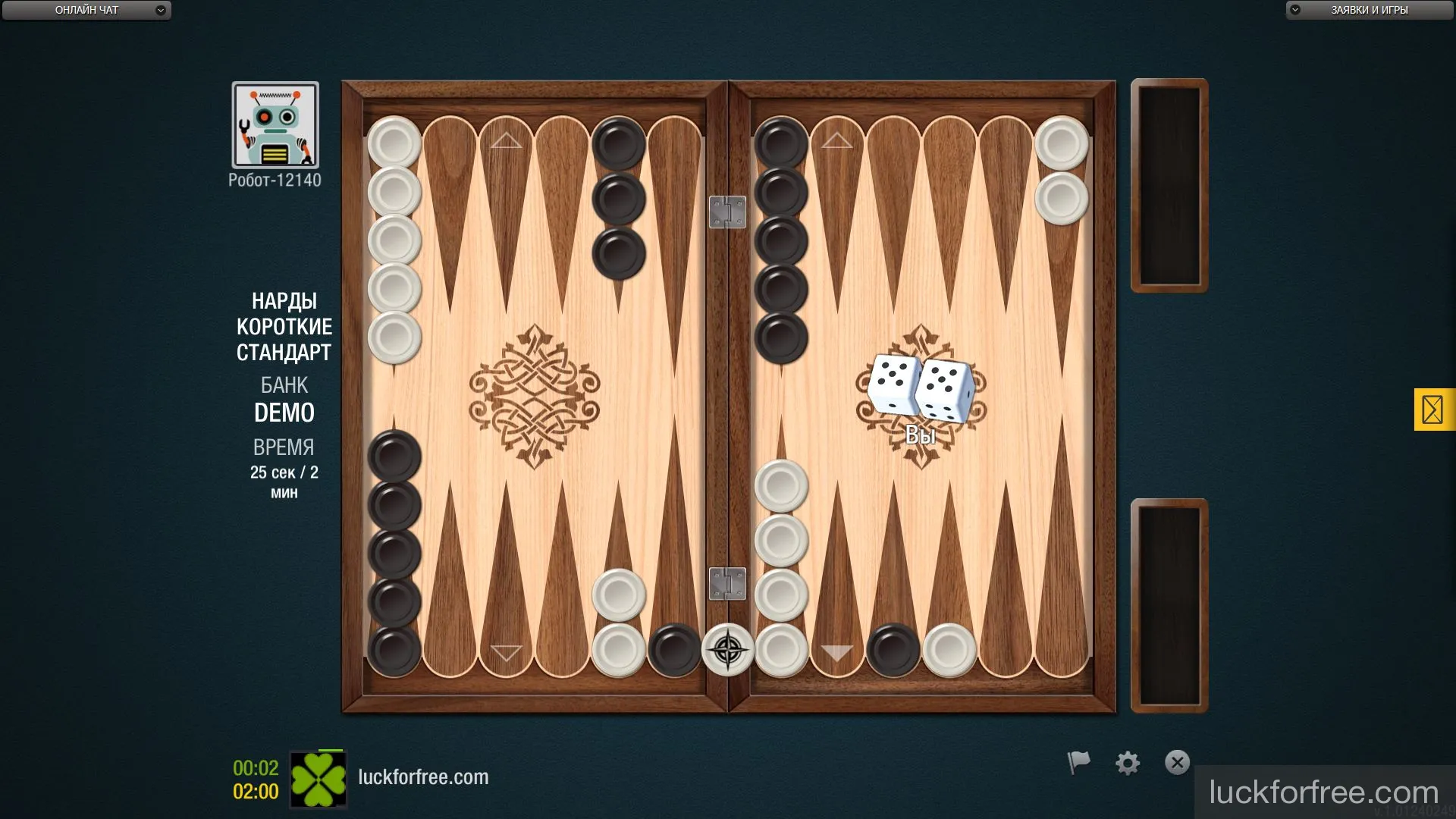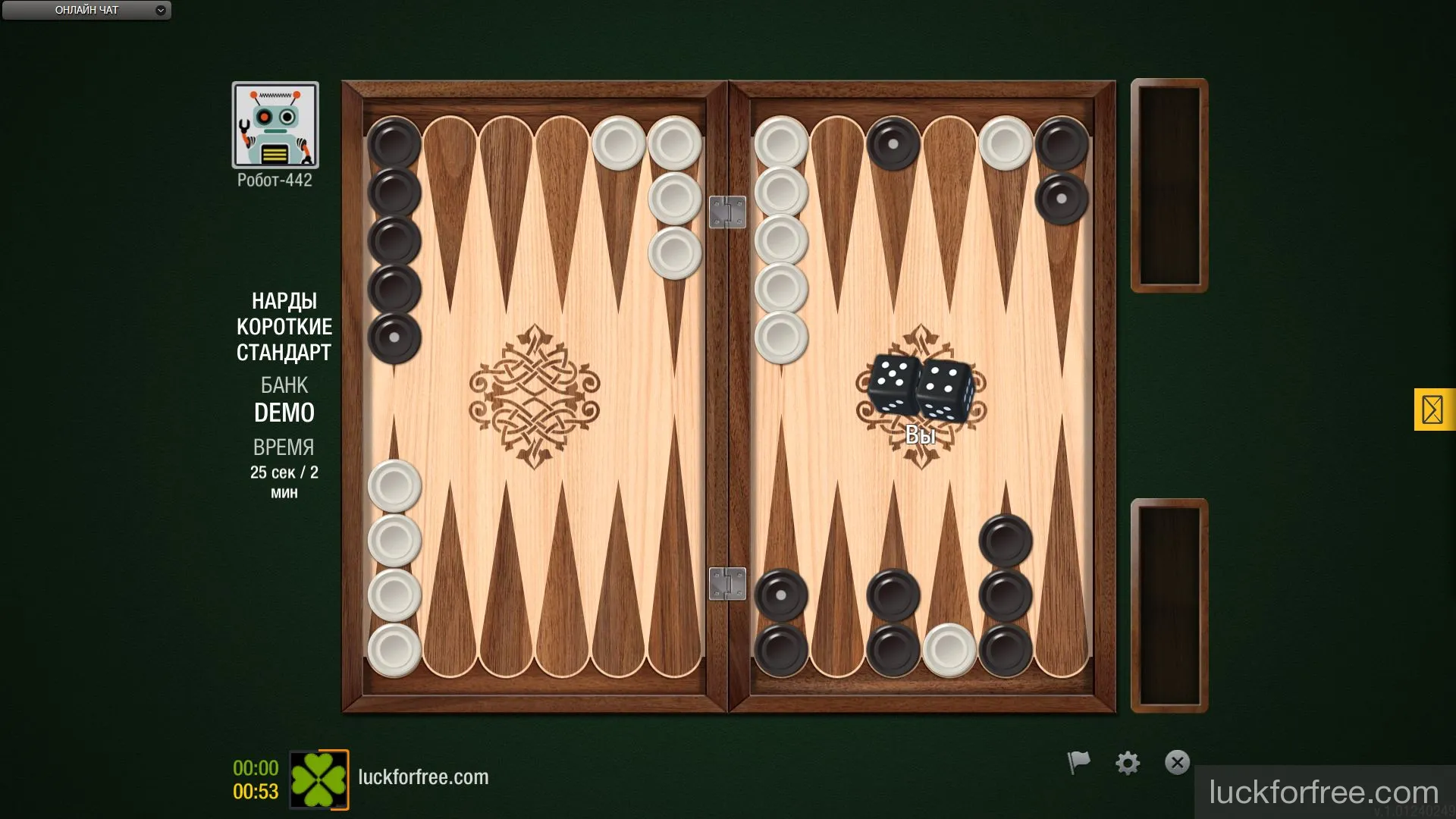To understand how to play Nardy correctly and win, you need to know the rules and learn to combine tactics with strategy. It’s important to think ahead, calculate your moves, and know how to block your opponent. Mastering the principles of the game isn’t difficult - you just need determination.
If you want to know how to win in long Nardy, focus on the specifics of this version. The key difference is that you can’t capture your opponent’s checkers, so your strategy should rely on blocking. You need to close key “points” so that your opponent can’t advance while you move your own pieces toward your “home.” A good strategy will help you gain control and confidently win.
For beginners, understanding how to play Nardy and its rules is crucial. Know your moves, plan ahead, and don’t leave your checkers in vulnerable spots. Matches are a mix of luck and strategy - and both must be used to succeed.
What is Nardy and how do you play it?
To stop wondering how to learn to play Nardy, let’s start with the basic rules.
The goal is to move all your checkers around the board through your opponent’s territory from the starting position into your “home,” and be the first to bear them off the board. The dice roll determines how many spaces you can move. Two dice mean two numbers - and two possible moves. For example, if you roll 3 and 1, you can either move one checker forward 3 points and then 1, or move two checkers - one by 3 points and the other by 1. If you roll doubles, your moves are doubled - you can make four moves instead of two, with one or more checkers. The points are the narrow triangles on the board, also called slots, cells, or fields.
The rules define how many checkers each player gets and how they’re arranged. Each player has 15 checkers of their color. In long Nardy, all checkers start in one corner called the “head.” Taking a checker from this spot is called “a move from the head.” You can move only one checker per turn from the head, and only onto open points. That’s the basic idea of how to play long Nardy.
In short Nardy, checkers are placed across the board according to specific rules. The main difference is that you can capture your opponent’s pieces. If the opponent’s checker stands alone on a point, you can land there, knocking it out and sending it to the “bar” - the ridge in the center of the board - from where it must re-enter the game.
Special terms in the game
Nardy has its own unique terminology you need to know to better understand the game:
- Mars and Koks: “Mars” is a special kind of victory where one player bears off all checkers while the opponent hasn’t borne off any. The winner earns double points. If the opponent hasn’t even brought their pieces home - this is called “Koks,” meaning a “dry win,” which gives triple points.
- Home Mars: This happens when the losing player brought all their checkers into home but didn’t start bearing them off, while the winner already finished. Like Mars, it gives double points.
- Zary: These are the dice that determine how many points you can move your checkers. The first roll (not the checker color) decides who starts - whoever rolls higher goes first. Each player can have their own dice set.
- Doubling cube: A special die with the numbers 2, 4, 8, 16, 32, and 64. Before rolling, a player may propose to double the stakes (not on the first turn). The opponent must accept or concede. Only the player who accepted can propose the next double, up to the maximum value.
- Oin: A simple win that gives one point. It’s when the losing player managed to bear off at least one checker before the winner finished all theirs.
Knowing these key terms helps you feel more confident and communicate better with other players.

Game nuances
There are many nuances in matches, but understanding them helps you stay calm. Let’s look at common beginner questions.
If you have no possible move - you simply skip the turn. You can’t skip intentionally. If at least one move is possible, you must make it, even if it’s not strategically favorable.
Doubles are easy to remember - a double means you play twice. For example, rolling 5-5 lets you move four times by 5 points each. This can be done with one or several checkers. Many ask how to throw doubles - professionals say it’s mostly luck, not skill.
Beginners often ask how many checkers can be taken from the head. In long Nardy - only one per turn. However, if you roll doubles (3-3, 4-4, or 6-6) on your first turn, you may take two from the head - since the opponent’s checkers block full movement.
To bear off checkers at the end, all must first be brought into home. Then, you roll a number matching the position of your checker - for example, a 5 lets you bear off from the fifth point or higher. The “home” is your lower right quadrant after passing through the opponent’s side.
You can’t block all 6 consecutive points, as it would completely trap the opponent - but once you’ve moved a checker into your home, such blocking becomes allowed.
Knowing these subtleties helps you feel confident and gain tactical advantage during play.

FAQ
- Where did Nardy come from? The game dates back to ancient times - archaeological findings show similar games were played in Mesopotamia, Egypt, and Persia.
- How old is Nardy? Around 5,000 years - one of the oldest board games still popular today.
- Where did it originate? Most historians trace it to Persia (modern Iran), from where it spread to India, Egypt, and the Mediterranean, later reaching Europe and Asia in its modern form.
- Who invented Nardy? According to Persian legend, the wise man Buzurgmehr created it to symbolize life’s randomness and change - a reflection of fate.
- What does the board look like? The classic board has 24 narrow triangles (points) across two halves. Players move checkers according to dice rolls.
- What are the checkers called? Simply checkers - each player has 15 of their color.
- What are the dice called? They’re called “zary” - numbered 1 to 6, showing how many points you can move.
- What’s the cube with numbers for? It’s the doubling cube - used to raise the stakes and add excitement to the game.
Start playing Nardy at least once - its rich history and strategic depth are worth exploring. Practice is the best way to master it.


